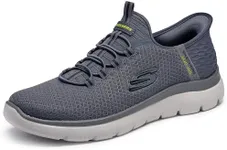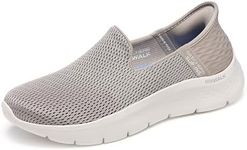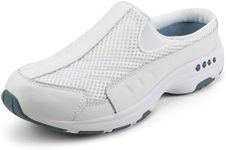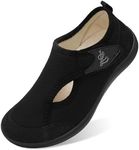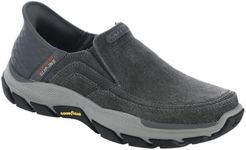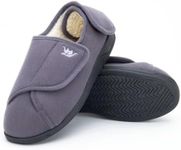Buying Guide for the Best Shoes For Seniors
Choosing the right shoes for seniors is crucial for their comfort, mobility, and overall health. As we age, our feet can change in size and shape, and we may develop specific needs such as extra support or cushioning. When selecting shoes for seniors, it's important to consider factors like fit, support, ease of use, and safety. Here are some key specifications to look for and how to choose the best options based on individual needs.FitFit is the most important aspect of any shoe, especially for seniors. A well-fitting shoe should have enough room in the toe box to wiggle toes, a snug fit around the heel, and should not pinch or cause discomfort. Shoes that are too tight can cause blisters and other foot problems, while shoes that are too loose can lead to instability and falls. To ensure a proper fit, measure the feet regularly, as they can change over time, and try on shoes later in the day when feet are slightly swollen.
SupportSupport is crucial for maintaining balance and reducing the risk of falls. Look for shoes with good arch support and a firm heel counter to provide stability. Shoes with removable insoles can be beneficial as they allow for custom orthotics if needed. For seniors with flat feet or high arches, specific support features can help alleviate discomfort and prevent further foot issues. Choose shoes that offer the right level of support based on the individual's foot structure and any existing conditions.
CushioningCushioning helps absorb shock and reduce pressure on the feet, which is especially important for seniors who may have joint pain or arthritis. Shoes with adequate cushioning in the midsole and heel can provide comfort during walking and standing. Different levels of cushioning are available, from minimal to maximum. Seniors with sensitive feet or those who spend a lot of time on their feet may benefit from shoes with extra cushioning.
Ease of UseEase of use refers to how easy it is to put on and take off the shoes. Seniors may have limited mobility or dexterity, so features like Velcro straps, elastic laces, or slip-on designs can be very helpful. These features eliminate the need to bend down or struggle with traditional laces. Choose shoes that are easy to fasten and adjust, ensuring they stay securely on the feet without causing frustration.
TractionTraction is important for preventing slips and falls, especially on wet or uneven surfaces. Look for shoes with non-slip soles made of rubber or other materials that provide good grip. The tread pattern on the sole can also affect traction; deeper grooves and patterns can offer better stability. Seniors who walk outdoors or on various surfaces should prioritize shoes with excellent traction to enhance safety.
BreathabilityBreathability helps keep feet dry and comfortable by allowing air to circulate. Shoes made from breathable materials like mesh or leather can prevent excessive sweating and reduce the risk of fungal infections. For seniors who experience foot odor or have conditions like diabetes, breathable shoes are particularly important. Choose shoes that offer good ventilation to maintain foot health and comfort.
WeightThe weight of the shoe can impact the ease of walking and overall comfort. Lightweight shoes are generally easier to move in and can reduce fatigue, making them a good choice for seniors. However, very lightweight shoes may lack the necessary support and cushioning. Balance the need for a lightweight shoe with the need for adequate support and cushioning based on the senior's activity level and foot health.

